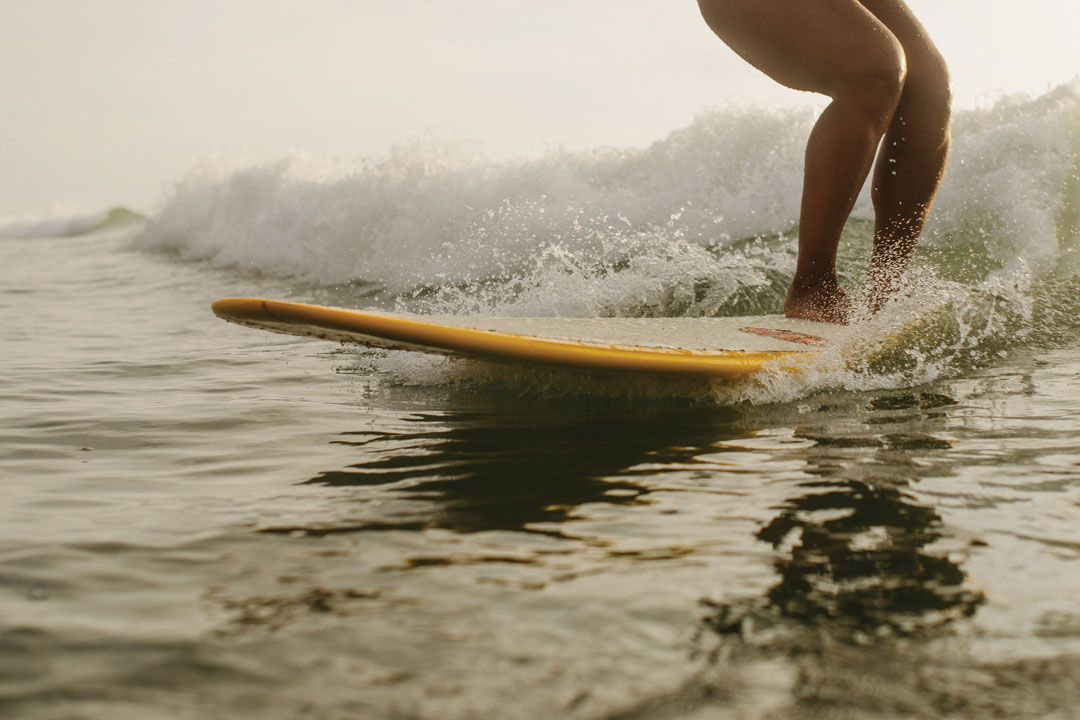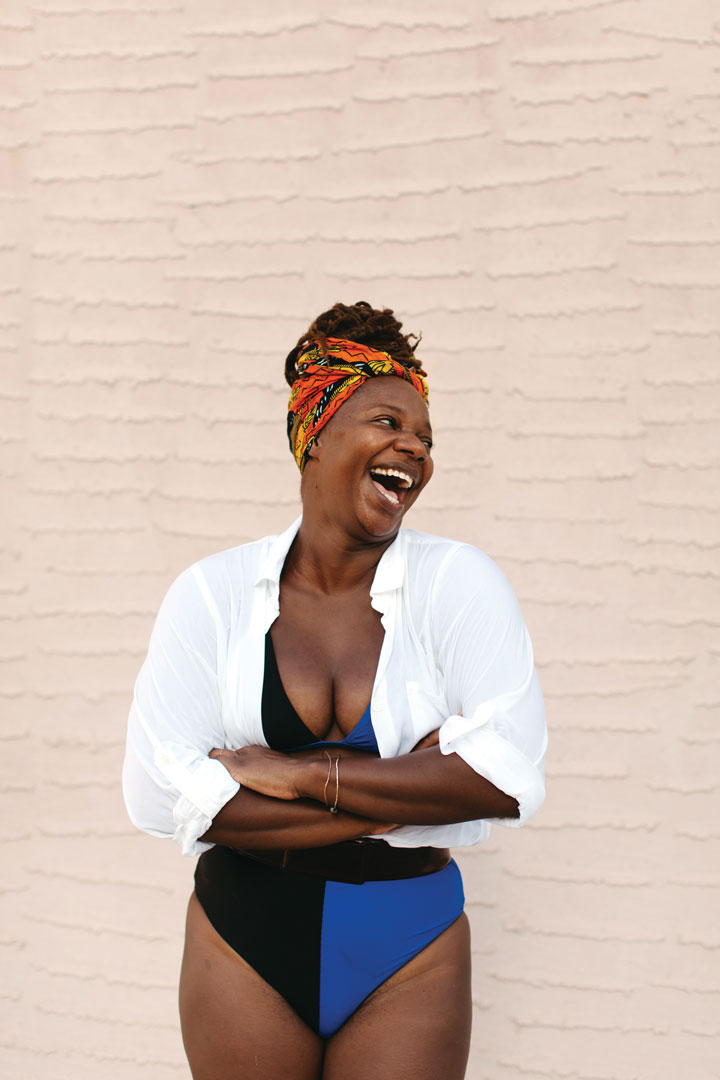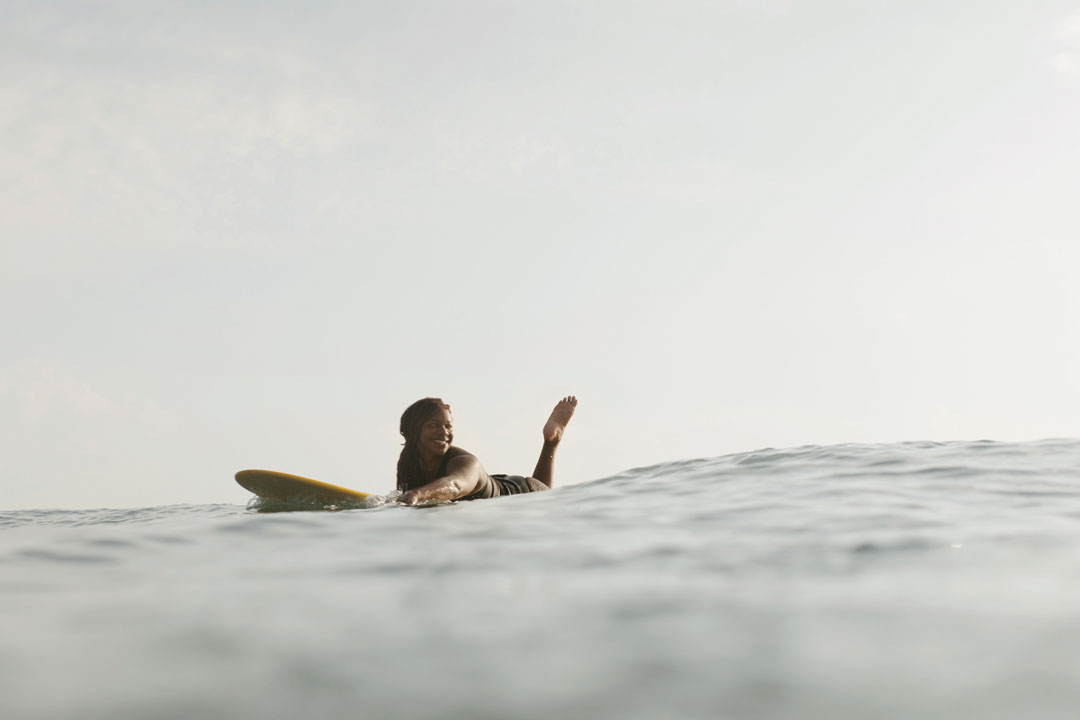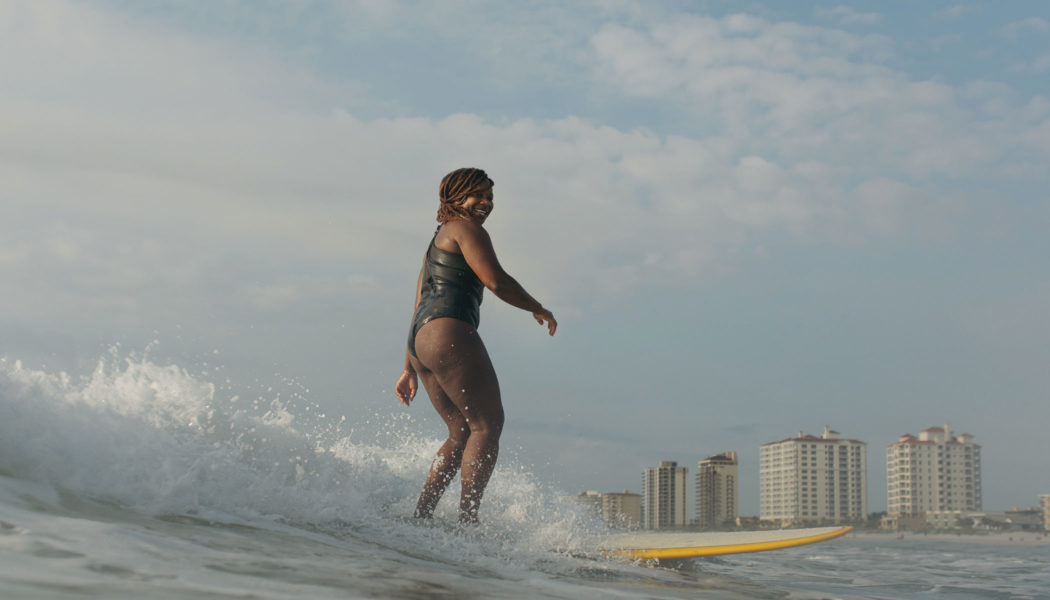One woman can change the ocean.
Photos by Stefanie Keeler
There’s not much better than when a person goes out of their way to make the world a better place for other people. These kinds of people deserve a medal and a nice bouquet of flowers. Especially one particular friend of ours who founded SurfearNEGRA, in efforts to #diversifythelineup, bringing opportunity to kids and people of color to enjoy and embrace the ocean. Woman of the hour, GiGi Lucas.
Through her nonprofit, she has two programs, ¡100 Girls! and ¡SURF THE TURF! These work to provide accessibility to surfing for kids who may not have had the opportunity before. Not only does GiGi want to share the physical sport of surfing, but also the passion and experience that come with it.
GiGi has worked to break down barriers that the break once had. The ocean is a place for everyone. We paddled out with GiGi to learn more about her efforts for equality, and how doing what you love can change the world.

Whalebone: You didn’t start surfing until age 35; did you always know you wanted to get on a board?
GiGi Lucas: So it’s funny. Even though I’ve seen surfing in its different iterations, like windsurfing and kitesurfing, I never considered it [surfing] to be an option for me until much later in life because I didn’t see anyone who looked like me doing it. It’s not that I didn’t know it existed, I just didn’t consider it.
WB: Where did you find the courage to get in the water and learn to surf for the first time?
GL: When I was in my late twenties, I made this random bucket list. Well, more like, “I want to do these two things before I’m 40.” One was to play the piano and one was to learn how to surf. I still can’t play the piano, FYI. But I knew I wanted to surf. I wanted to learn. My old college roommate got married in Costa Rica, so when I was down there I took a surf lesson and that’s what got me into the water. And the first time I stood up on the wave it just kind of clicked and I was like, “Yep. This is it. This is what I want to do with my life.”
WB: What was your motive to create SurfearNEGRA?
GL: The initial reason was that I didn’t see anyone who looked like me, from the United States, even attempting to surf. So the original idea started off with creating a community where women of color could come together and share breaks and spots and locales. But, then I realized that there were already other people who were starting to do that same concept and so what I realized was that yeah, it’s great there are women that are starting to get into the sport, but then what? So I said, “What would prevent the next generation from doing this?” and I recognized the fact that there was an access issue and in terms of seeing what was possible and then actually doing what was possible. I realized that there needed to be a bridge to help the next generation do what they saw.
WB: How can surfing change a life?
GL: The thing with surfing is that it teaches you how to be present and still in a society that promotes hustle and grind. And what I’ve learned through surfing is you can actually accomplish the same, if not more, by being present and still than when you are running on all cylinders. My illustration for this is always about the wave. If we are not present and still and trust in the work that we have already put in to get to that point, it’s very possible that we will actually miss this beautiful wave that has been created long before we got there, to come to us at that very moment. At this season in my life, things are flowing and I honestly believe that the reason why so much is happening is that I’m learning how to be present. Had I known that earlier in life, the skill set and discipline to be present, I feel like there would’ve been a lot more opportunity for me to relax in who I was and be comfortable in where I was and the work that I had already put in versus always feeling inadequate and not doing enough.
In a few years from now, when we describe someone, it is not a black girl who surfs, not a woman who surfs, but just, ‘Look at that surfer.’ Period.
—GiGi Lucas
WB: What is the most rewarding part of your mission?
GL: As much as I can, I’ll actually go to the surf camps that the girls are attending and talk to them and hear about their experience. So there were these two little girls, like 8 or 9 years old, and they were so excited that they were on these big waves. I asked them how big the waves were and without hesitation they were saying how they rode five-foot waves, going on and on. There’s no way they could have ridden five-foot waves, but, the fact that they had that memory and the fact that they were so confident in explaining their experience, you could tell there was this freedom that they had and they said it with confidence. That’s the thing I feel like a lot of girls, especially girls of color, don’t have when they are doing something outside of the norm.
WB: Someone we should follow?
GL: My current infatuation is Michaela Coel (@Michaelacoel). She is a British actress and she starred in this series on Netflix called Black Earth Rising. Just her presence is phenomenal, her visual image is incredible. She’s stunning for so many reasons, but her vision to tell these stories you probably would never hear about otherwise is super inspiring. People like that give me courage and they inspire me because if not us, then who is going to help tell this story?
WB: How many girls has ¡100 Girls! helped so far?
GL: Since 2018 (and factoring in two summers of COVID), our organization has provided access to surf instruction for over 325 girls. The crazy part is that we know that this is just the tip of the iceberg considering the sheer number of inquiries that we weren’t able to service because the demand far exceeded our resources.

WB: Who is your biggest inspiration/role model and why?
GL: I have three. The first one is my mother. She is probably one of the most selfless people that you will ever encounter. She is so intuitive it’s almost scary. She can meet someone and automatically know what their deficiency or what their need is and then the crazy part is that she somehow can conjure up the words to comfort that person. She’s incredible that way.
The second is Serena Williams. Primarily because she operates in a space where she is in a sport that historically didn’t include people who look like her, yet she has managed through hard work and discipline and even enduring the negative comments to still excel. She is an excellent example of what any athlete should be, not just a black woman, but any athlete.
This is going to sound really cliché, but Beyonce is my girl. It’s not her music, it’s her work ethic, business savvy and her ability to bring to fruition these creative ways of communicating what she wants to say. It takes balls to be able to be in an industry that is not necessarily set up for her to succeed, and she still finds a way to tell her story regardless, in a way that compensates her accordingly, and I think that’s something we as women and we as black women don’t pay attention to when it comes to business. We bring this beauty and this talent and this contribution to the table, yet we don’t realize the value of what it is and she does.
WB: How has the surf community been welcoming and supportive?
GL: A couple of ways. One has to do with who I am as a person and my personality and the time I took to learn the sport in the community and industry and adopt the etiquette of how the sport works and respect the players who have spent years doing it. So I think when you come to the table with that, people then, in turn, respect you and what we bring to the table. But, I can say that in terms of sheer support, I still see a lot of privilege in terms of “if it’s not my problem, it’s not a problem. If it doesn’t directly affect me, then I’m not going above and beyond to help get rid of the issue.” So I do see there is a lack of true long-term engagement, but things like this take time and as we build momentum I think people will be more inclined to get engaged.
The thing with surfing is that it teaches you how to be present and still in a society that promotes hustle and grind.
—GiGi Lucas
WB: What is your mantra?
GL: This one comes from my dad, he always told me, and he still does every time I see him, he says, “Baby girl, don’t let anything or anybody steal your joy.” And if that’s not the truest thing. Every day when I get up I have to really think about the things I don’t even particularly like to do. I have to remember why I do it and it always has to be tied to bringing me joy and being supportive of me being joyful in some way, shape, or form. I have to make a concerted effort to carve out time to surf by myself because that is what started this whole journey and I have to remember and keep reminding myself of the joys therein so I can bring that forward in everything else I do.
WB: What does SurfearNEGRA mean to you?
GL: The name SurfearNEGRA means surfing while black. In South America and in Latin countries, the term “negrita” means black girl. So when I think about the actual term, “surfing while black,” it’s actually a good thing. It’s a term of beauty and endearment and something that you have deference for and you love. So when I think about what SurfearNEGRA means to me it’s just that. It is beautiful for me to be able to see the opportunity for these young girls to experience something that is so beautiful.

WB: What advice would you give to others in regards to stepping outside of their comfort zone?
GL: I’ve said this before, I’ll say it again, I’ll say it ‘til the day I die, “Get comfortable being uncomfortable.” That’s life in general. I feel once you adopt that mentality, there are so many incredible things that happen in life when you don’t play it safe. That’s it. Whether it’s going into a sport where no one looks like you or going into the ocean and you haven’t had the most experience with it, just get comfortable being uncomfortable and enjoy the ride.
WB: How does catching that wave make you feel? Is this part of what you want to share with the people you are helping?
GL: It’s pure elation. It’s not just about being free, it’s about knowing that there are ways for you to defy the laws of physics and do incredible things. And that concept in itself just reminds me of how many things are possible if we just live and allow them to happen. And that’s what surfing is. There are so many things that are contrary to the laws of nature, but if we just be still and allow certain things to happen, you can do incredible things. We can do incredible things.
This is what I want to share. Crazy things are possible. There is so much that we don’t know until we allow it to happen. That fear is what keeps us from doing so many things, but again, if we just get comfortable being uncomfortable, there are tremendous things that can happen in this life.
WB: What are your plans for SurfearNEGRA in the future? Where do you hope to be in five years?
GL: The ¡100 Girls! program is cranking along nicely. Even though the program will more than likely always be called ¡100 Girls!, we will add a zero to get 1,000 girls in the water every summer. We’re not quite there yet, but that’s the goal. As far as our land-based program, Surf the Turf, there are a lot of exciting things happening that will help us optimize our reach. We’re positioning the organization to be future-proof so we can deliver on our mission to truly make surfing accessible to any child anywhere.
Doing what you love can change the world. GiGi Lucas is changing the world. To find out more about what you can do to help #diversifythelineup, visit surfearnegra.com.

